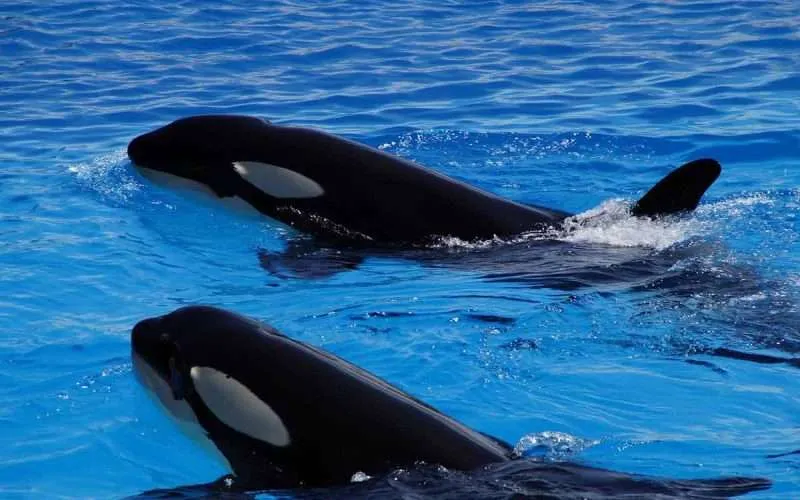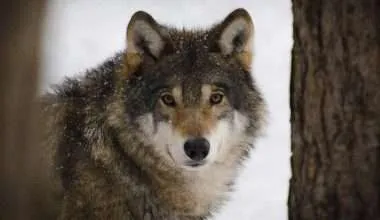Table of Contents Show
Humans often have an affiliation with the largeness of something. It is an odd fascination to see and experience how mind-bogglingly large something can be. It may just be an act to ourselves or troi perhaps remind us that in the infinite vastness of the universe, we are but a scintillation of the cosmos.
Of course, however, no list of the largest can be complete without the biggest mammal in our world. With that said, it is imperative to note that it isn’t all whales that are considered the largest creatures in the world. In fact, some whales may even be considered humble when it comes to their size.
Whales, the world’s biggest marine mammals, are an astonishing variety of species that have captivated and pleased experts and spectators for thousands of years. Being associated with ancient societies, whales have played critical roles in the creation of entire nations, and are among the most sought-after creatures on the planet.
Humans have always been drawn to the largest of these incredible creatures, despite the fact that whales exist in a variety of sizes. To quench this thirst for knowing about the larger of these species, we’ve compiled a l.ist of the 10 largest whale species in the World.
Top 10 Largest Whale Species in the World
10. Minke Whales
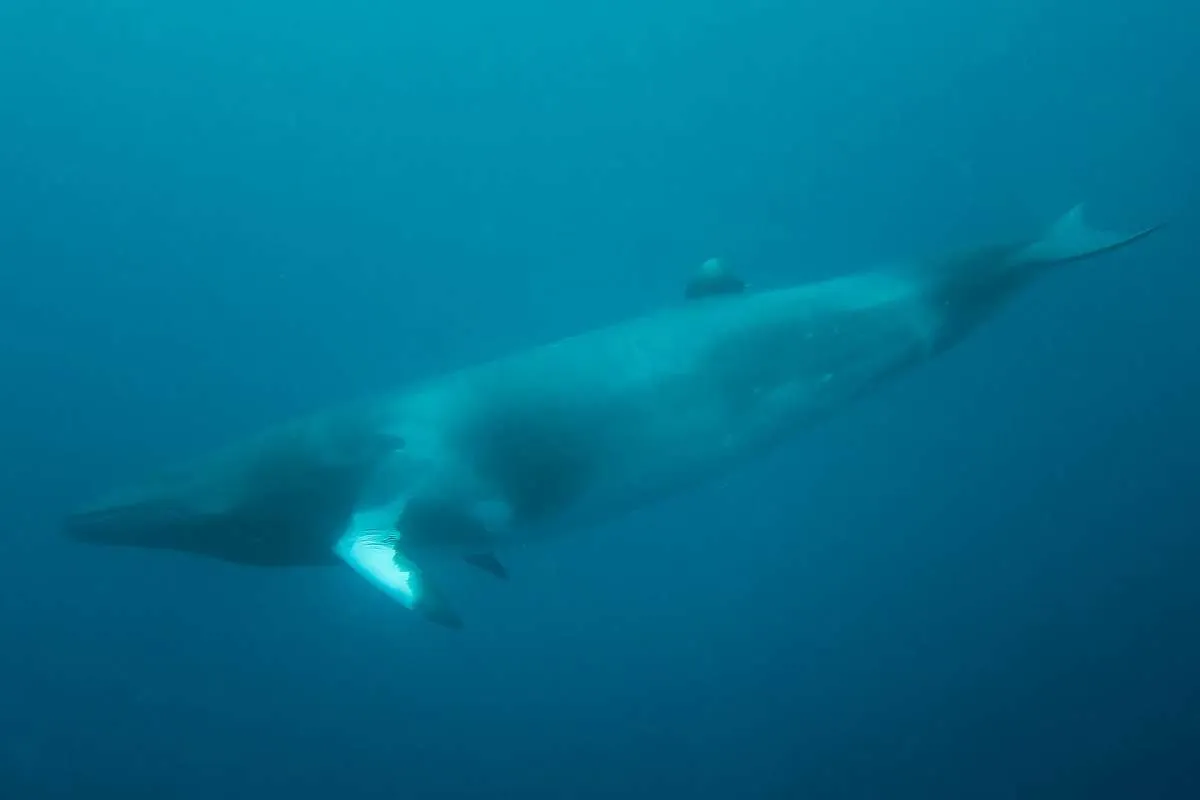
The Minke whale, one of the biggest mammals on the planet. However, it is still classified as one of the smallest of the large whales in the oceans. It stands at an astonishing 24 feet, while the larger individuals of the species do manage to grow up to 36 feet even.
Minke whales are classified into three subspecies: common, dwarf, and Antarctic. It may be very obvious what the difference between these subspecies is. These giant dwarves are also known as the smaller rorqual whale due to their size in comparison to the other large whale species.
According to typical observations, these whales migrate alone or in pairs, but seldom in larger groups. When hunting, they have furrows or grooves down their neck that extend out to corner prey.
These majestic creatures are usually threatened by accidents with ships and whaling. These large sea creatures, as one would expect, have few predators and are often found to be peaceful shallow-water fish.
The Minke whale primarily feeds on schools of tiny fish. Though they also depend on zooplankton to fulfill their nutritional needs. From spring until fall, they eat in a very selective manner. It is also fairly quick.
9. Bryde’s Whale Complex
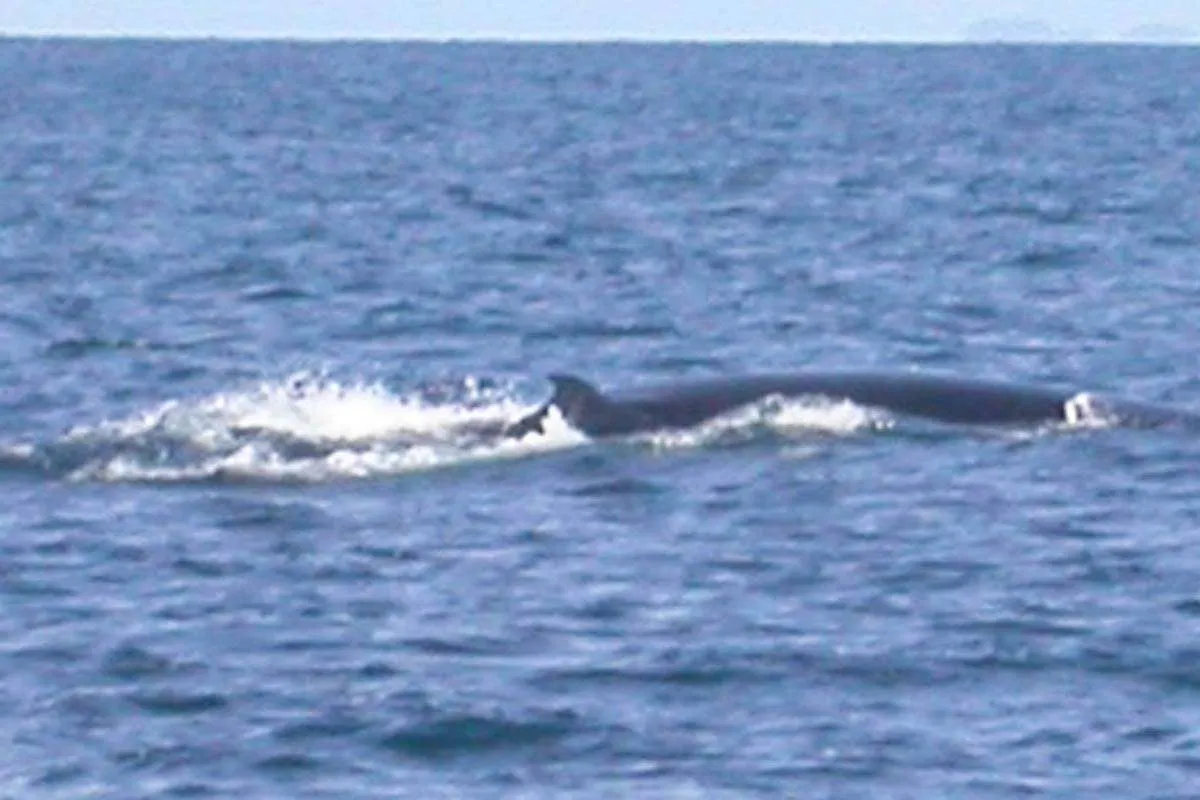
This word denotes the presence of two or three species of this type of whale. They may measure up to 49 feet in length and weigh up to 40 tonnes. They eat krill, squid, fish schools, and other tiny crustaceans.
They are named after Johan Bryde, the first whaling industry founder. It is the only whale that does not migrate, spending the full year in the temperate seas of the equator.
Bryde’s whales typically solitary, although can be encountered in small groups at times, notably moms and calves. When breaching, the whale is very bashful and just shows its head.
The Byrde’s whale is also considered another type of Baleen Whale. It may be found in warm seas all around the world. The biggest form of the whale has been measured to be 46 feet long. The Byrde’s whale has two blowholes but lacks teeth.
Instead, these whales’ mouths are lined with rows of baleen plates. They resemble the sei whale mentioned above in many ways.
8. Gray Whale
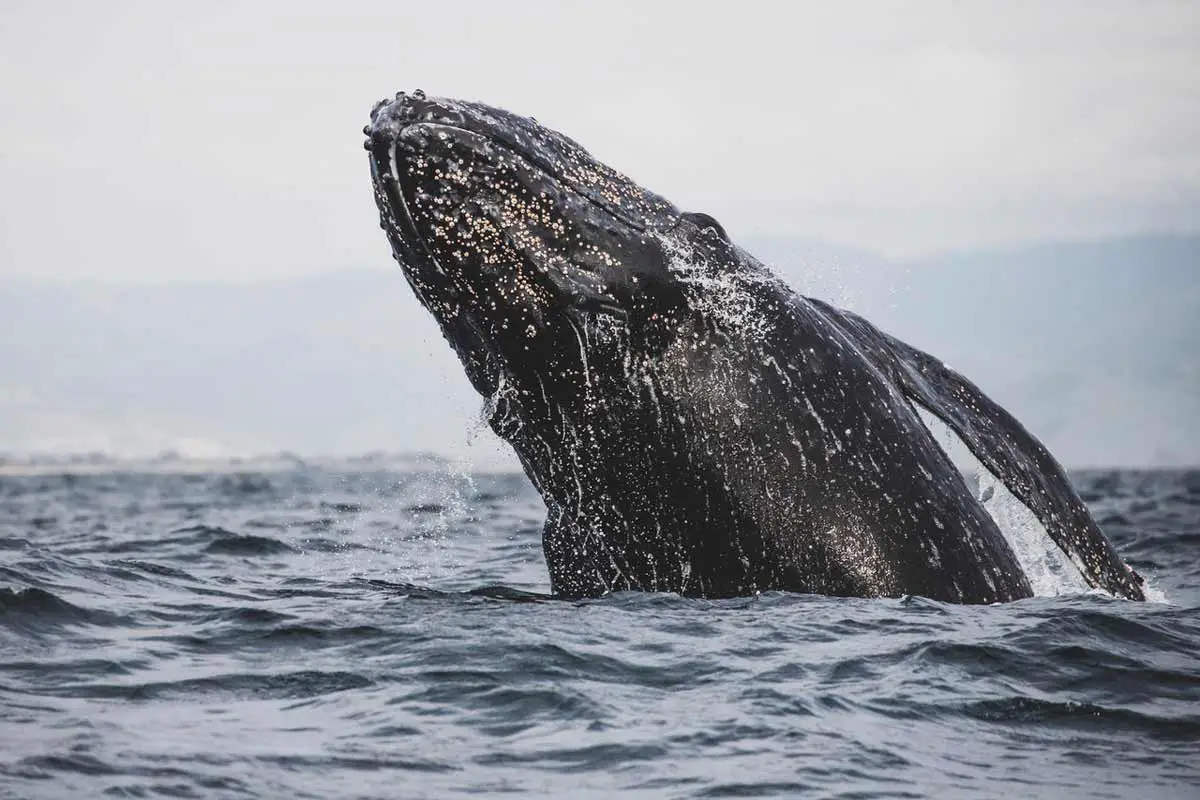
The gray whale, one of the sea’s giants, is ranked eighth. It may reach a length of 49 feet.
That is the same height as the Hollywood Sign!
It weighs 36 tonnes, which is about the weight of 15 full-sized pickup trucks.
The great gray whale gets its name from the gray and white stripes on its body.
Its calves are deeper in hue, gradually turning gray. It is a baleen whale found on the shores of the North Pacific and Atlantic, as well as in the Mediterranean and as far south as Namibia.
This enthusiastic migrator across the Pacific has been seen by researchers. The Gray Whale is a bottom feeder whose primary diet consists of amphipods, isopods, tiny fish, and red crabs. As a result, they stick to the continental shelf, where they may scrape sediments from the ocean floor.
Because of its continuous resistance during capture, it is known as the “Devil Fish.” Grey mother whales are likewise fierce guardians of their babies. Mating among gray whales is unusual in that it includes three or more individuals. A gray whale’s gestation period can last up to 13 months.
These incredibly large creatures not only are astonishing for their size but also for how long they end up living. The gray whale on an average lives around 55 and 70 years of age. However, it is important to note that the oldest ever living whale recorded was 80 years.
7. Sei Whale
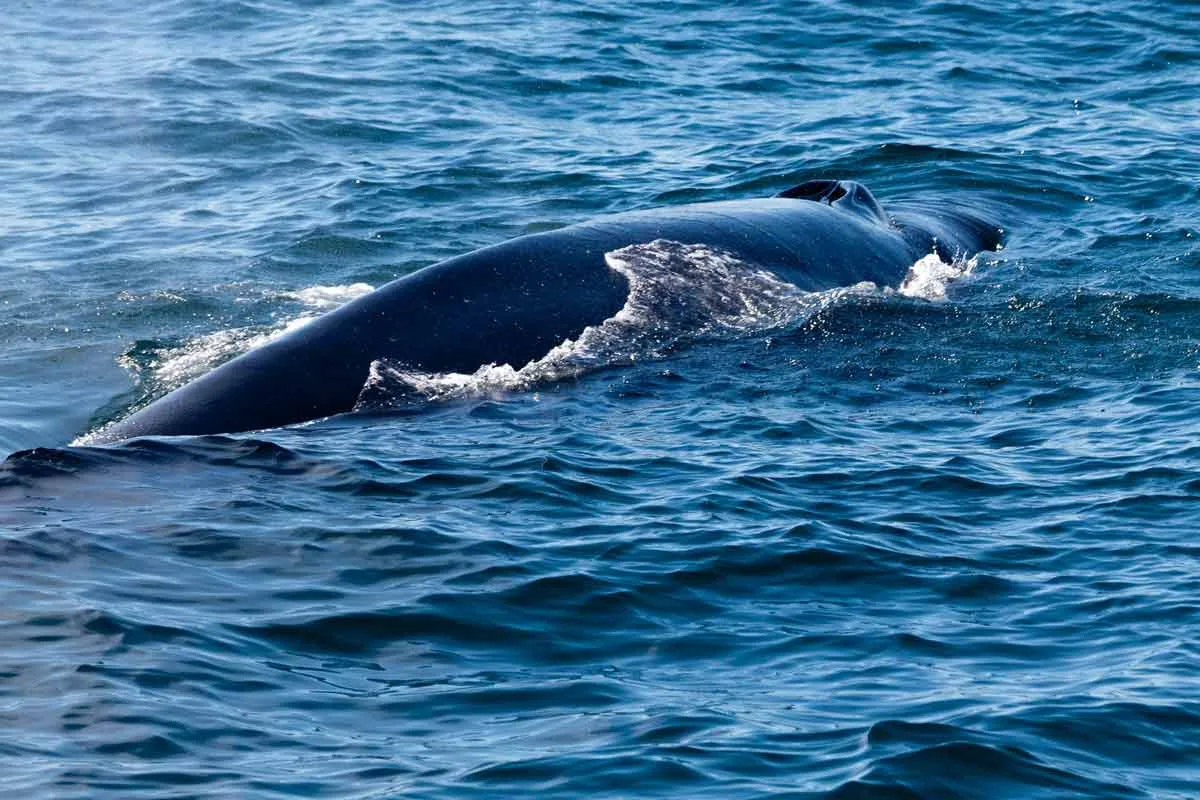
This is another huge water mammal with unusual migratory habits. The name Sei is derived from the Norwegian word meaning coalfish. The whale was given its name because it appeared at the same time of year as the coalfish. It may be able to grow up to 64 feet long, which, for perspective, is longer than a bowling alley.
The maximum weight that the Sei whale attains on average is 28 tonnes. That is about 3.5 times the weight of a full-grown elephant. Despite its size, the Sei whale is renowned to be speedy, reaching speeds of 31 miles per hour on average.
While that may be the average speed, higher speeds attained by these fast swimmers have been recorded. The greatest speed of a Sei whale on record is 50 miles per hour. A Sei whale’s food consists primarily of krill, copepods, and zooplankton. Its incredible speed gives it a great advantage over its prey.
A whale may devour up to 900 kg of food every day. In the summertime, the Sei whale migrates from subpolar waters to a more temperate subtropical region for the purpose of mating.
Whaling has utterly decimated the Sei whale population. Currently, as it stands only about one-third of the Sei whale population has managed to survive the horrors of whaling.
The leading cause of mortality for Sei whales is endemic poisoning, which claimed the lives of 337 whales on the Chilean coast in 2015.
6. Humpback Whale
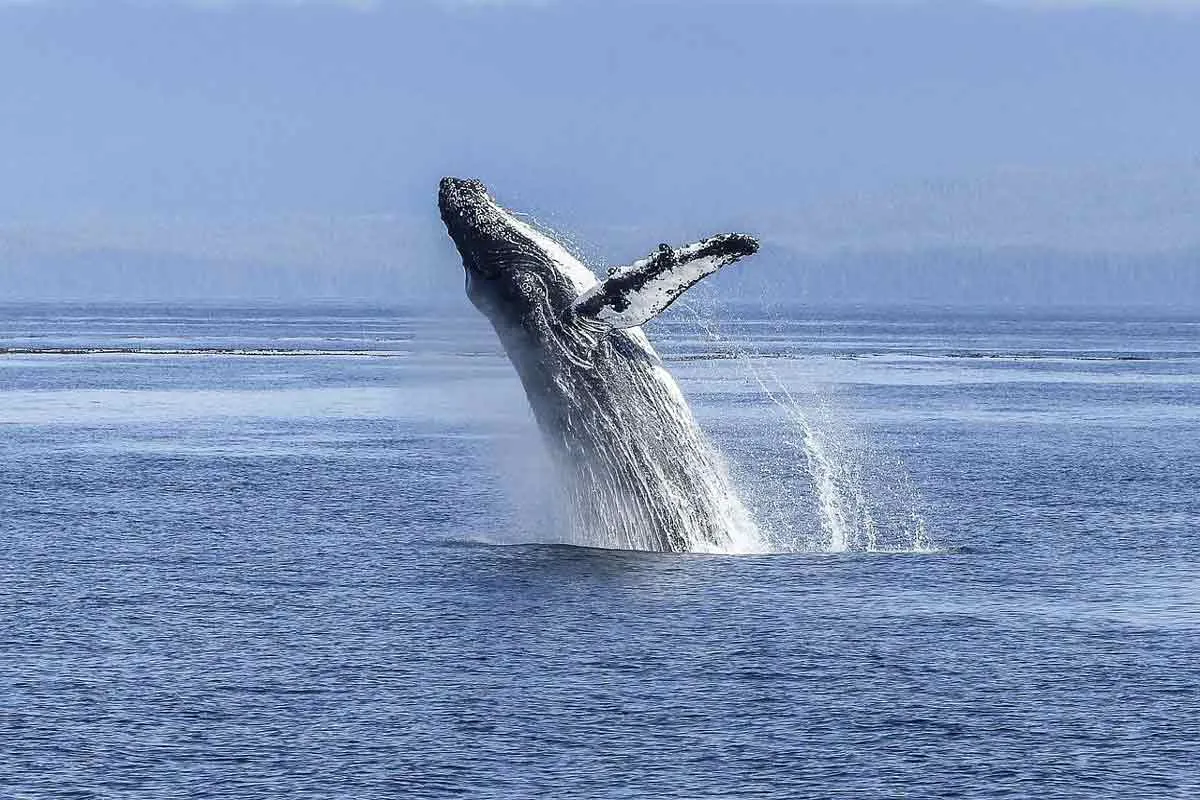
It may seem quite surprising that the Humpback whale is not in fact called that because it has a humpback. It is rather due to how this whale arches its back as it prepares to take a dive which is in the shape of a humpback; that its name is the Humpback whale.
This large whale easily grows beyond 60 feet in length. For perspective, this would be the equivalent of having 5 Tyrannosaurus Rex dinosaurs stacked on top of each other. Being such a large mammal swimming in the ocean, this whale is a very visible migrator and manages to travel distances of about 5000 kilometer on a yearly basis.
The longest known migration was an incredible 18,840 mile trek. During the summer, they move to the temperate seas surrounding the equator. They also put on quite a show with their acrobatic techniques. Despite their massive size and weight, humpback whales excel at breaching.
They effortlessly thrust their body out of the water and backsplash. According to some experts, this action is a display of health to impress females during the mating season. A Humpback whale lives for roughly 50 years.
They prey on tiny crustaceans and planktons as filters. They are easy to distinguish by deep furrows running down their necks. Humpback whales may be found mostly in the North Pacific, the Gulf of Alaska and Maine, and even the Arabian Sea.
These delightful creatures may travel alone for long distances, but they may just as likely travel in small groups of two or three.
Another characteristic feature possessed by these sea mammals is the tune that they sing while swimming through the oceans. These eerie tunes may be an odd mixture of screams, cries, long lasting moans. The males of this whale species in particular sing vividly as their song travels large distances of up to 30 kilometers.
5. Bowhead Whales
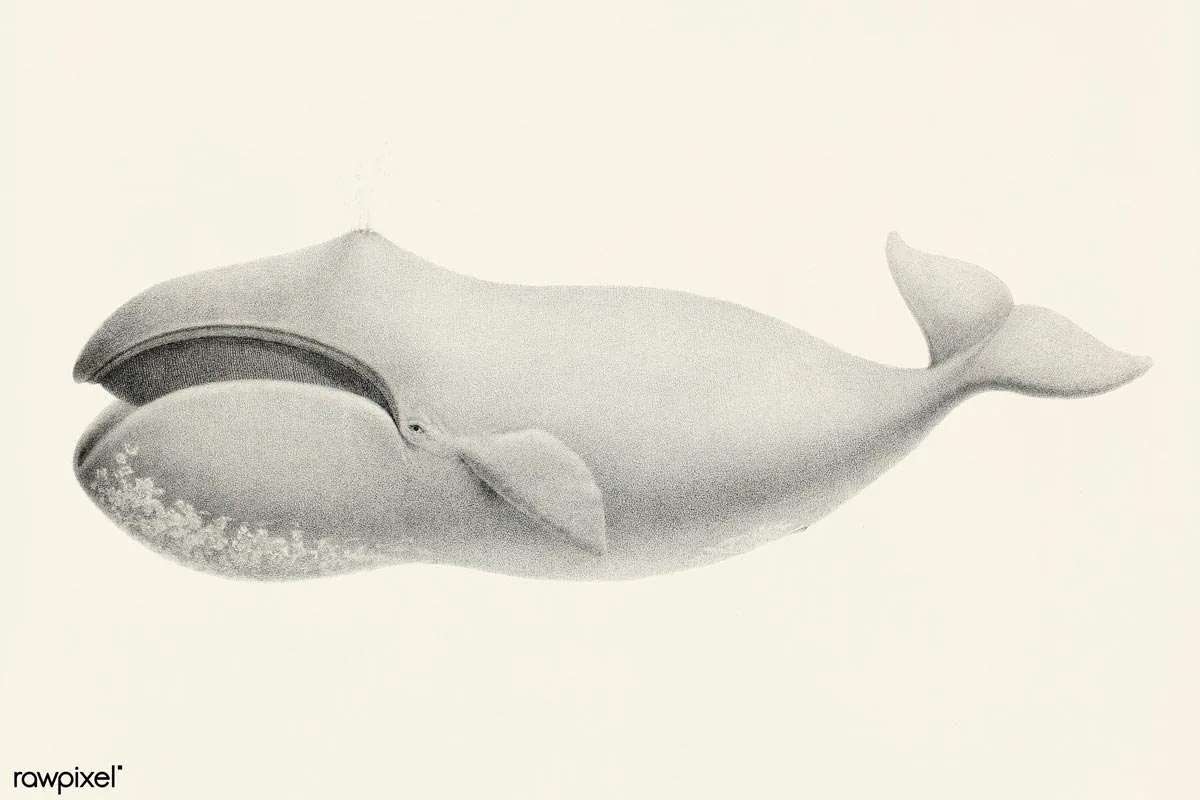
These are the well-known Arctic water giants. The curvature of their heads inspired the moniker bowhead. The migration of bowhead whales is influenced by melting and subsequent freezing of ice around them.
Their enormous heads, muscular skulls, and powerful bodies allow them to crack ice up to 7 inches thick. In fact, a Bowhead’s skull covers one-third of its body. They have thick blubber, around 50 cm thick, that keeps their bodies warm in the frigid Arctic. By far the thickest blubber of any whale species.
A mature Bowhead whale may weigh up to 75 tonnes. To understand more clearly exactly what that amount would look like; 75 tonnes is more than The Space Shuttle’s weight.
They range in length from 50 to 60 feet. They are exceptional at breaching and have such tremendous leap force that they can jump entirely out of the water.
They graze on zooplankton at the ocean’s bottom and in the shallows. A bowhead may consume up to two tonnes of food every day. Commercial whalers killed off a huge population of Bowhead whales in the twentieth century. Today there stand only about 10,000 of these magnificent behemoths.
4. Sperm Whale
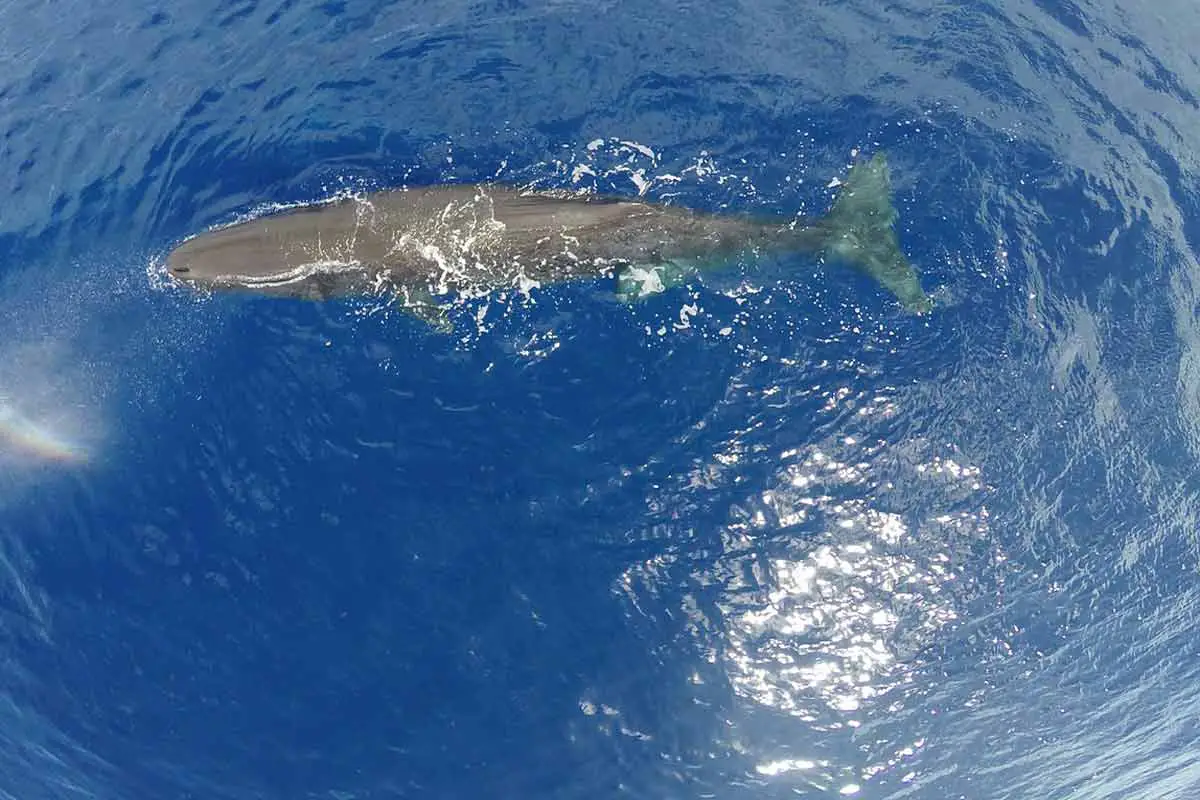
The term derives from spermaceti, or sperm oil, which was sought after by commercial whalers for the manufacture of candles, oil, and lubricants. This material was once misidentified as whale sperm, but it is really Ambergris, a thick waxy substance found in the whale’s skull.
They are notable for possessing the world’s biggest brains, weighing a staggering 17 pounds, which is 5 times more than the human brain. They are also the most powerful toothed carnivores. Each side of the lower jaw has 20 to 26 teeth.
One kg equals one tooth. These massive fangs, however, are not as commonly utilized for hunting as you might imagine. Bull whales primarily utilize them to battle competitors. The dentine layers on the whale’s teeth are also analyzed by researchers to establish the whale’s age.
Sperm whales may reach lengths of 52 to 67 feet and weights of 40 to 57 tonnes. They have a life expectancy of 60 years. Sperm whales are the second deepest divers of all whales, diving up to 7400 ft.
They communicate with one another using echolocation, which involves producing echoes and listening for other whales’ sounds. Young males reside in groups with females, but as they develop, they split out and wander alone.
3. Right Whales
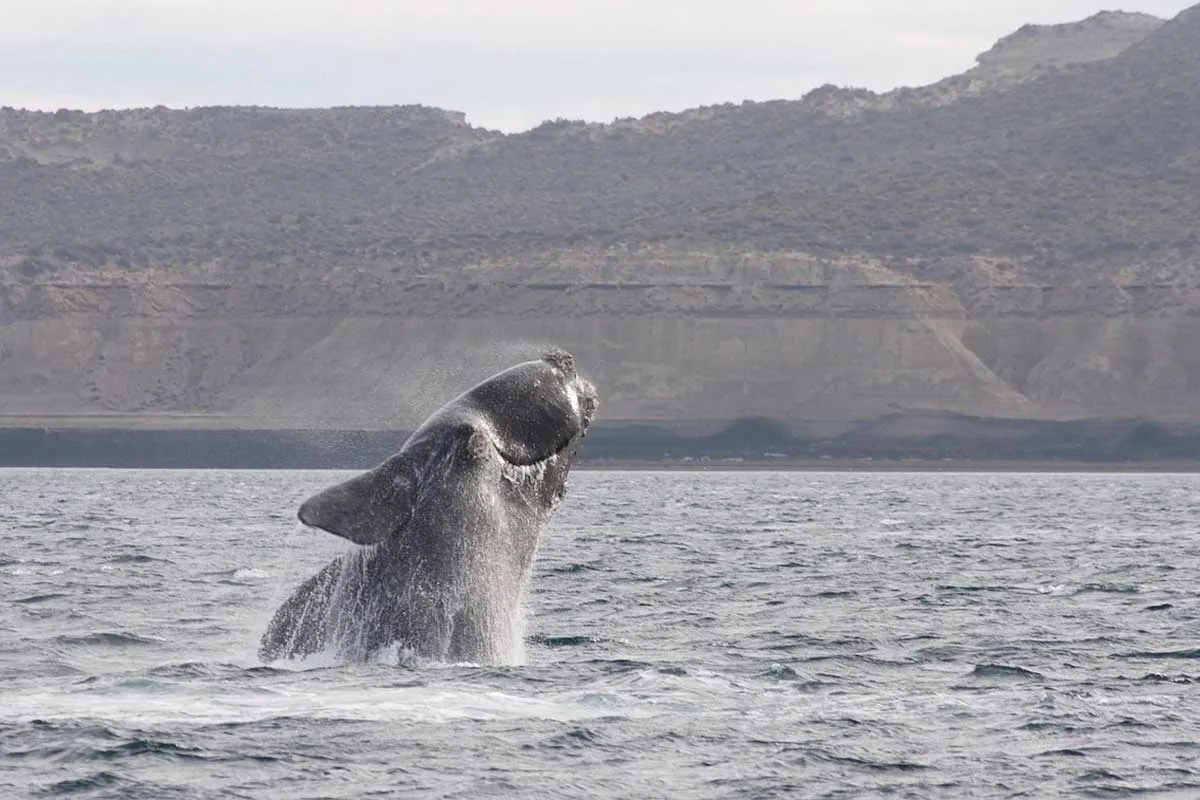
Just because your name is Right, does not indicate that you will not become a target for some of the worst cruelties that humanity has to offer. And that is exactly what the North Atlantic Right Whale learnt the hard way.
The North Pacific, North Atlantic, and Southern Whales are three distinct species. They earned their name because whalers thought they were the appropriate whales to target during the whaling period. They were sluggish skimmers, moving at 10mph over brief periods of time, quiet, simple and very easy to defeat.
The fat content in their bodies meant that, even after being slaughtered, the whale bodies float on the surface. This makes for an easy target for whalers looking to make oil out of the whale fat.
The blubber of the Right Whale can be as thick as 12 inches!
While their population increased marginally after the whaling period, their numbers have not yet fully recovered.
And those aren’t the only risks that these whales face. Entrapment in fishing nets and ship collisions are just two more, worrying facts for the Right Whale.
Mature Right whales may grow to be 55 feet long and weigh 70 tonnes. They mostly feed on copepods, krill, and pteropods near the ocean’s bottom.
Females have babies every 3-5 years. A fascinating fact is that the right whale has bigger testes than the bull whale. They are baleen species, thus they filter feed.
They go south over the winter to mate and calve before returning north in the spring. They communicate by using vocalization. A whale may live between 70 and 100 years. There are only around 400 Right whales remaining in the world, and scientists are working hard to protect them.
2. Fin Whale
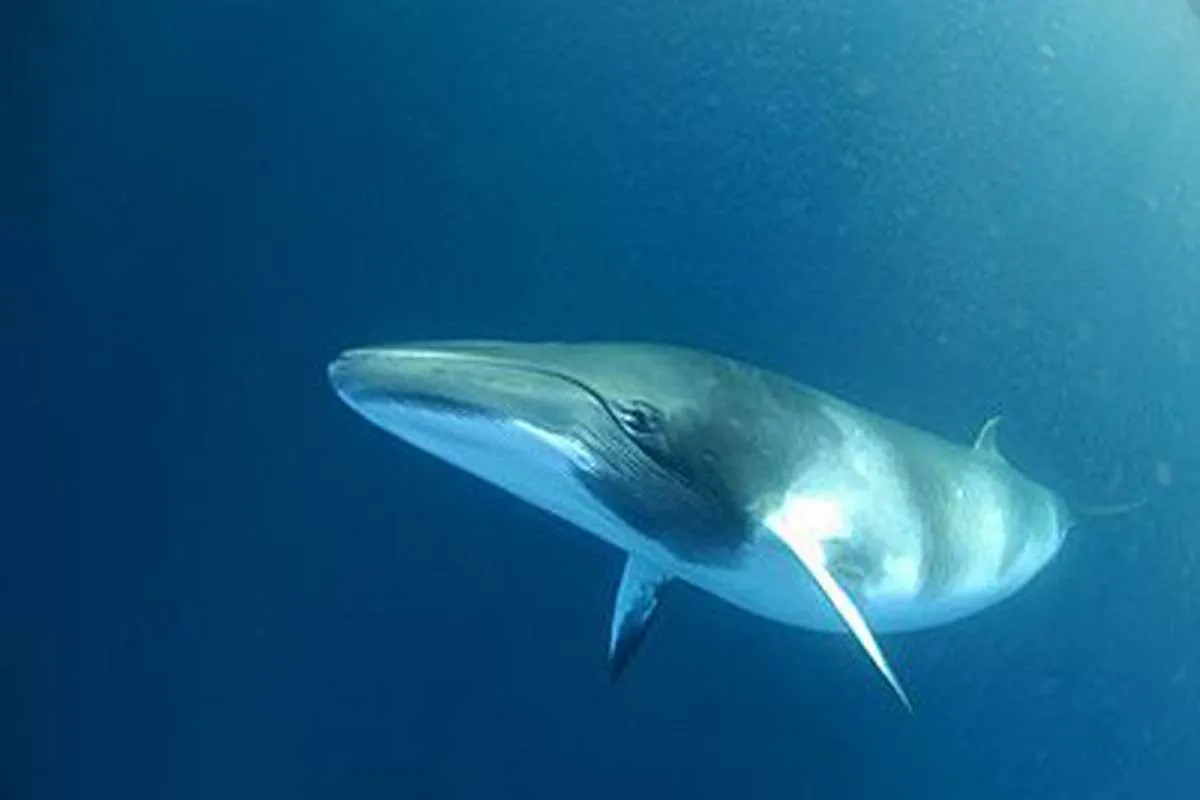
As the second largest whale in the world, the Fin Whale is no less impressive than any of the other members of its species. A massive 27.5 meter in length, and weighing around 80 tonnes in mass, the Fin Whale is no less impressive than any others of its whale species.
The Fin whale has a throat like an accordion, which allows it to keep up its diet of eating at least one tonne of food daily. The life span of the Fin Whale is 80 to 90 years.
The Fin Whale does have a number of risk factors to them. These include the amount of ocean noise they are subjected to, overfishing, and even vessel strikes. They can affect the quality of life for these gigantic creatures and considerably shorten their lifespan.
Then again, since they have been considered fair game for a very long period of time, there are rough estimates by the NOAA that approximately 725000 fin whales were killed between the 19th and 20th centuries. The prevention of commercial whaling in the 1970’s and early 1980’s has helped them recover their numbers a little however.
1. Blue Whale
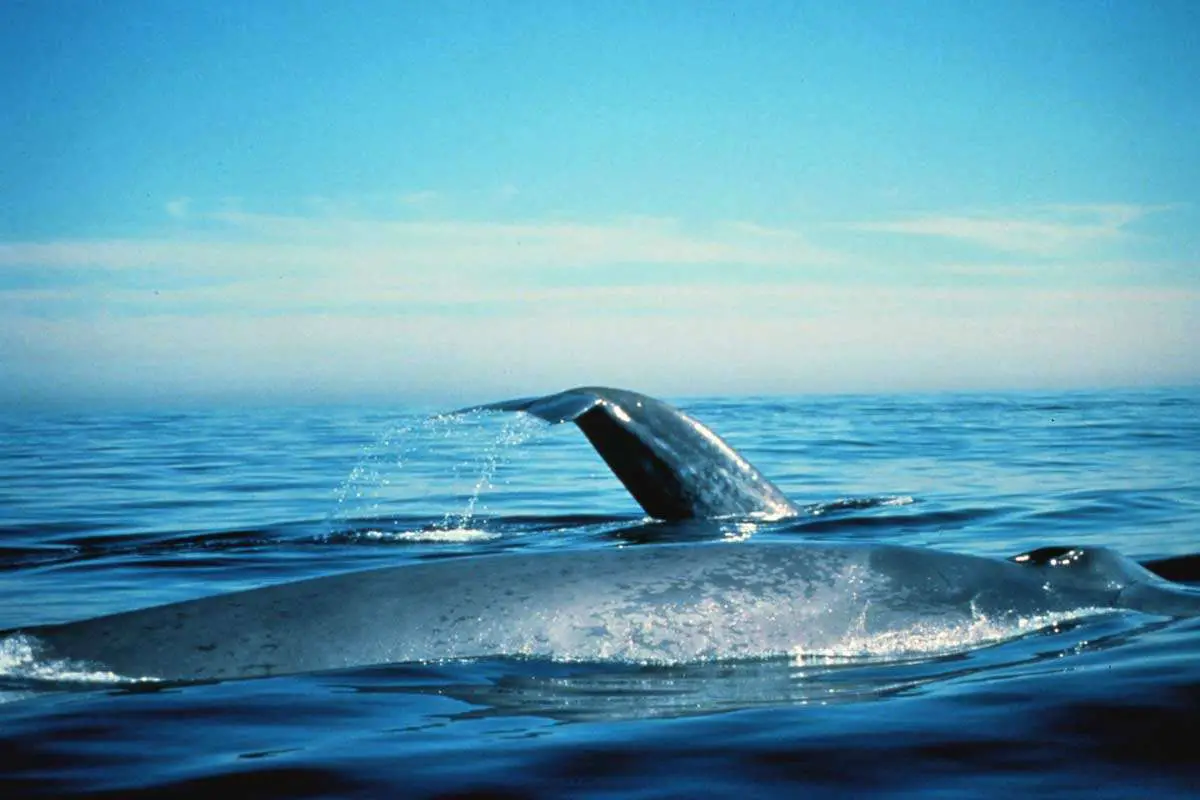
Clocking in at a massive 30 meters or 98 feet length, the Blue Whale has a mass to match; over 190 tonnes, or roughly the weight of 33 elephants. Not only that, the Blue Whale is also credited with having the largest heart of any animal on the planet.
This whale type belongs to the Baleen Whale Parvorder Mysticeti family, and is famous as being the largest living creature to have ever appeared on Earth. The whale itself is slender, and coloured in a grayish-blue hue.
Its head, when viewed from above, seems to present a U-shaped appearance. The body itself has a mottled appearance although different whales have varied patterns appearing on their own body.
